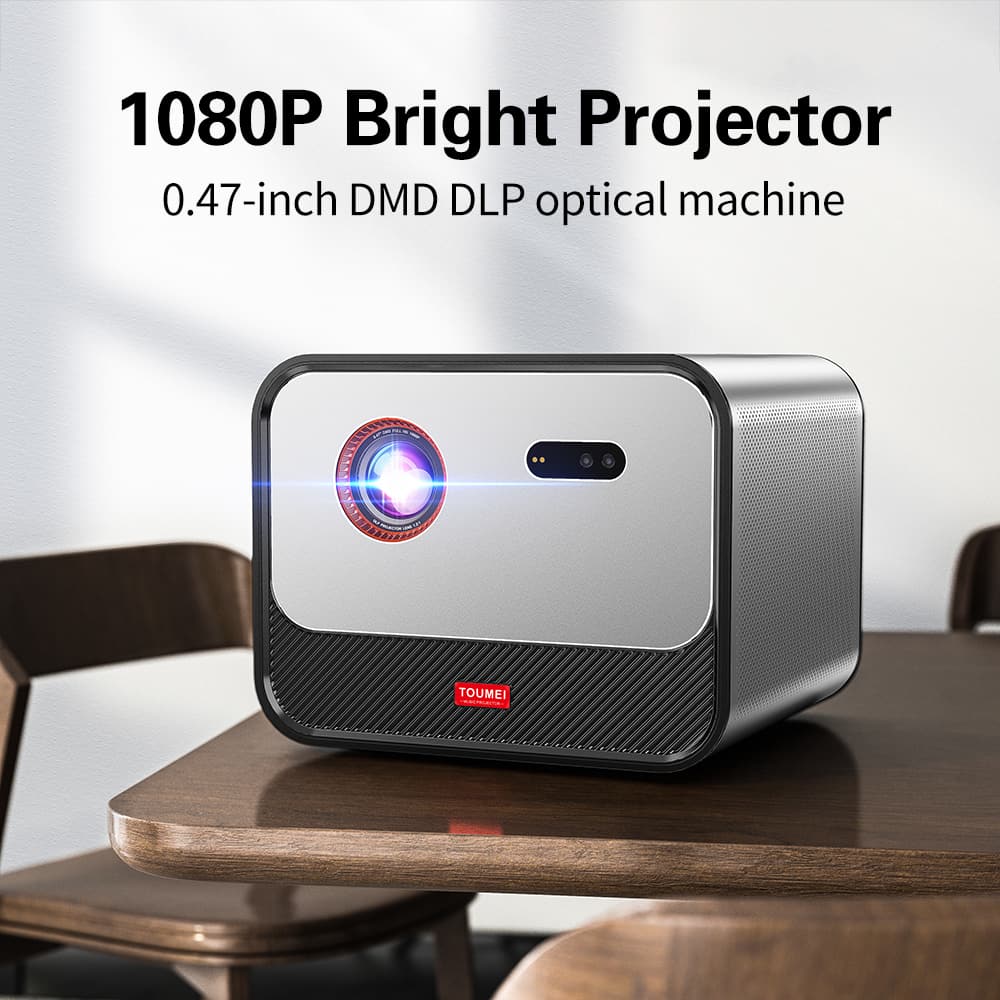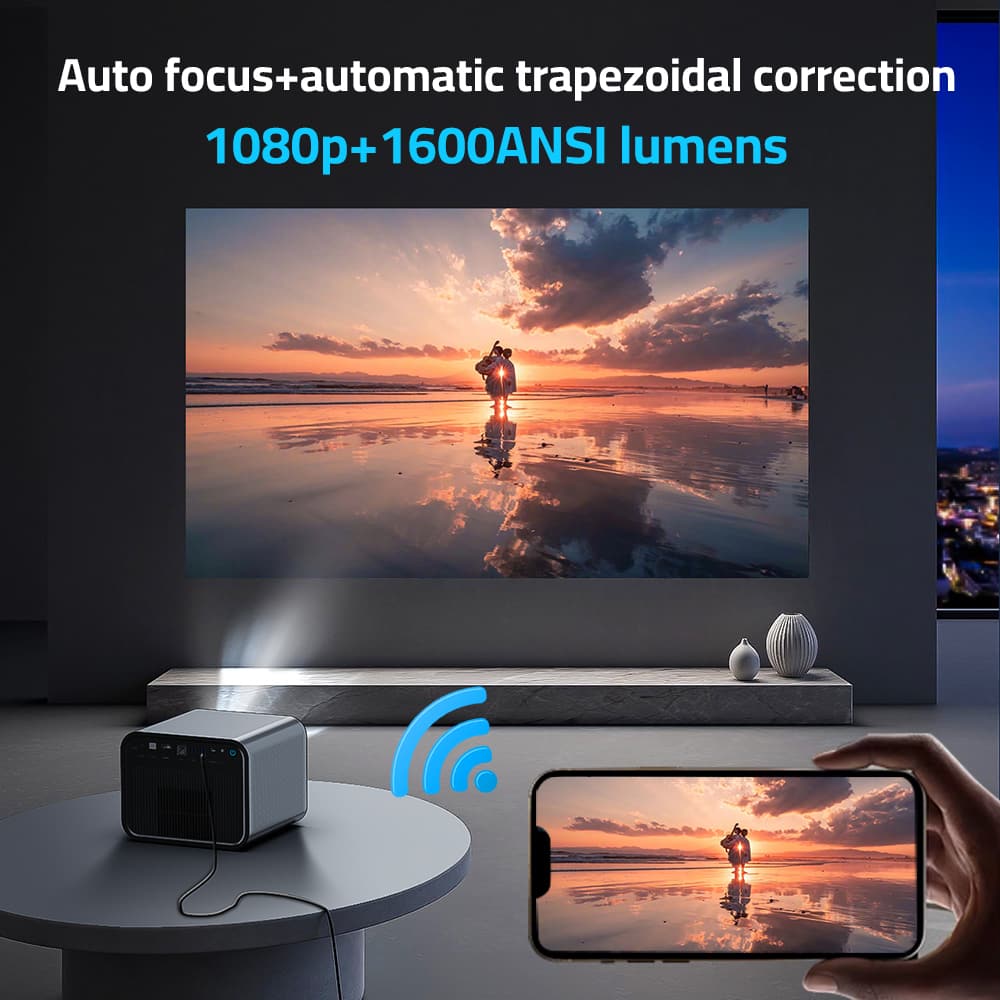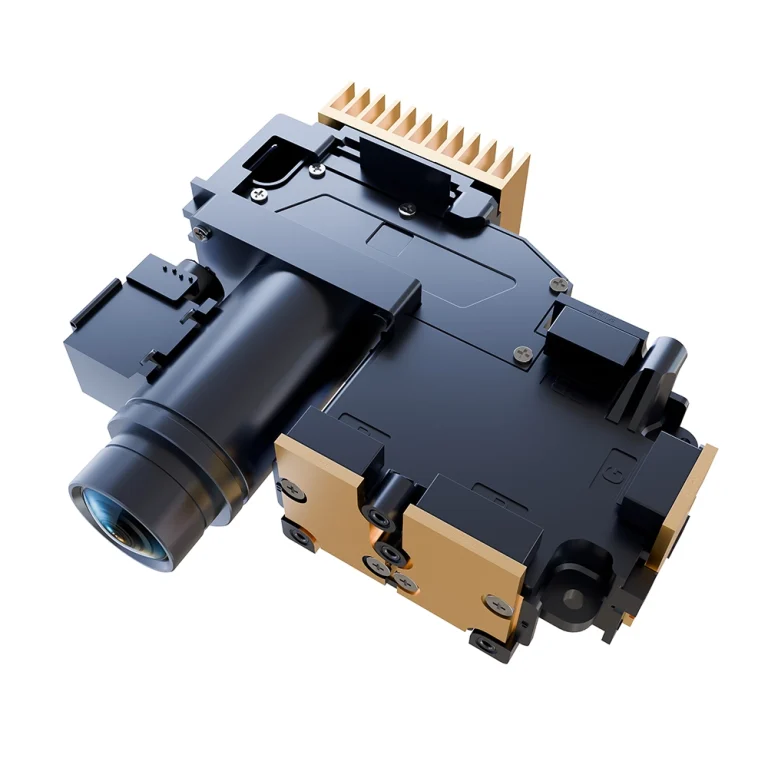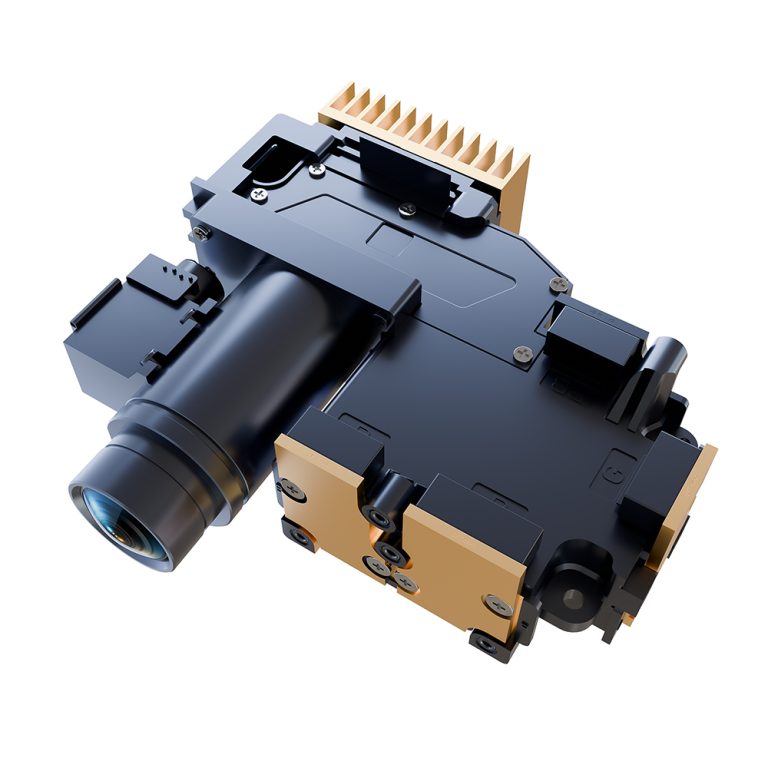Hey movie lovers and home entertainment fans. Ever settled in front of your big-screen television, favorite snack ready, and thought, “This is nice, but what if it felt more like a real movie house?” That’s exactly where home theater projectors step in. They aren’t just fancy devices. They can completely transform how you watch films, binge series, or play games. In this piece, we’ll explore why a home theater projector frequently beats television displays. We’ll examine genuine benefits, supported by industry observations and user experiences. Keep reading – you might just reconsider your living area arrangement.
The Immersive Experience: Bigger Isn’t Always Better, But Here It Is
Let’s start with the clear fact: dimensions are crucial for home viewing. Televisions currently max out around 85 or 100 inches. Even then, you need to spend a serious amount of money. A home theater projector? It can easily cast a 150-inch or even 300-inch picture onto your wall or screen. Imagine relaxing for a superhero marathon where the excitement fills the whole space. No frames, no edges – just pure involvement.
But it isn’t solely about enormous size. Projectors using DLP technology deliver sharp, lively colors. They achieve this through small mirrors directing light. This makes that vast image stand out. Consider a unit offering 1080P resolution and 2200 ANSI lumens. Even in a room with lights on, the visuals remain clear. I recall a buddy who replaced his 65-inch television with a projector setup. He mentioned that viewing sports felt like sitting right beside the court. The noise from the spectators seemed to surround him. True, a dimmer space provides the top outcome. However, current projectors manage surrounding light much better than older versions.
Here’s a little bonus point: projectors can turn family film nights into something wonderful. Children get really excited about the enormous picture sensation. It’s similar to converting your lower level into a small cinema. And you avoid the sticky floors.
How Projectors Handle Different Rooms
Not every house possesses a special viewing room, correct? Projectors are outstanding here because they’re adaptable. Short-throw types can produce a huge picture from very close. This is ideal for smaller apartments. Long-throw versions function well in more spacious areas. Compare that to a television: it’s stationary. You install it once, and that’s its spot. Projectors let you change things instantly.
Cost Savings That Add Up Over Time
Finances are important. High-quality televisions can cost a fortune for a premium OLED panel. A reliable home theater projector? You can grab one for under a thousand dollars. It often surpasses a mid-level television in both picture area and functions. Yes, you’ll require a projection surface or a plain wall. Those are inexpensive additions.
Let’s examine the details with some figures:
| Feature | Typical TV (65-inch) | Home Theater Projector |
| Upfront Cost | $800-$2000 | $500-$1500 |
| Screen Size | Fixed at 65″ | Up to 200″+ adjustable |
| Energy Use | 150-300W | 85-200W (efficient models) |
| Lifespan | 60,000 hours backlight | 20,000-30,000 hours lamp (LED lasts longer) |
See? Projectors frequently use less power, particularly LED-based ones. Replacement lamps also aren’t as costly as before. Over five years, you could save money just on electricity. Plus, if new tech emerges, replacing a projector feels less difficult than discarding a giant television.
I once talked with a fellow at a tech exhibition. He operates a small company. He utilizes projectors for business presentations. But he adores them at home too. “Televisions are heavy to relocate,” he commented. “Projectors? Pack them for outdoor film evenings.” That easy movement saves money on multiple setups.
Superior Image Quality in the Right Setup
Don’t misunderstand – televisions have advanced significantly with 4K and HDR. However, projectors, especially DLP types, provide something unique: that true movie feeling. They avoid the visible grid effect found on some LCD panels. Colors appear vibrant thanks to high contrast ratios, often exceeding 10,000:1. Add capabilities like HDR10+. Then you get richer blacks and more brilliant highlights.
Think about glare. Televisions sometimes reflect room lighting like glass. Projectors? The picture is beamed forward. This causes less direct reflection. In a controlled setting, it feels smooth and luxurious. Units with automatic focus and keystone adjustment make installation simple. No more adjusting angles endlessly.
Tech Specs That Make a Difference
- Brightness:Aim for 1800+ ANSI lumens. This copes with daytime viewing without losing clarity.
- Resolution:Native 1080P or higher. It upgrades 4K material beautifully.
- Sound Integration:Included speakers? Dual 10W or 20W units produce enveloping audio. Connect via Bluetooth for extra devices.
- Smart Features:Android OS means apps like Netflix function directly on the device. No extra streaming boxes required.
From my experience, projectors shine in dynamic range. A moment in a dark thriller? The shadows seem authentic, not unclear.
Oh, and a quick side note: ever experienced 3D on a projector? It’s significantly more enjoyable than on televisions, which mostly abandoned that option. Put on the special glasses. Then you’re transported to another dimension.
Flexibility and Portability for Modern Lifestyles
Life moves fast. Televisions act like heavy anchors in your space. Home theater projectors? Many are easy to move, featuring built-in power sources lasting 2-3 hours. Bring one camping or to a backyard get-together. Models under 5 pounds fit inside a backpack.
Connectivity is vital too. HDMI, USB, WiFi, Bluetooth – stream straight from your mobile phone easily. Wireless screen sharing means no messy cords across the ground. For game players, low input delay (under 20ms) keeps action responsive.
Imagine this: Friday evening, pals visiting. Project onto the garage entrance for an open-air showing. A television can’t manage that. Or shift it to the sleeping area for late-night streaming. Adaptability is the winner.
Health and Eye Comfort Considerations
Looking at displays all day? Projectors might be gentler for your vision. They use soft, spread-out light instead of a direct bright source. This lessens fatigue. Some units even feature vision safety settings. These filter out harsh blue light.
Research indicates larger pictures viewed from farther away improve posture too. No slouching over a television. Kids enjoying cartoons? A projector promotes leaning back, similar to a theater.
But hey, nothing is flawless. Dirt can accumulate. So clean the lens sometimes. It’s a minor trade-off for the positives.
Introducing Toumei: Your Go-To Projector Supplier
Before we finish, let’s discuss Toumei. Based in Shenzhen, China, Toumei Technology Co., Ltd. has been creating excellent DLP projectors since 2013. They are experts at everything from portable versions to high-lumen machines for home cinemas. With over 50 patents and a factory producing 150,000 units annually, they manage OEM superbly – customizing brightness, resolution, even styles for your label. Their selection includes eye-comfortable C-series portables with 180 ANSI lumens and battery life reaching 190 minutes, or the strong X5 with 2200 ANSI for open-air setups. If you’re searching for dependable, original projectors, Toumei has the solutions. Check their site for specs on models like the V7 Pro or S8.
Conclusion
So, there you have them – solid explanations why a home theater projector beats television displays in involvement, savings, quality, and adaptability. It isn’t about abandoning your television entirely. It’s about enhancing your system for those unique times. Whether you’re a relaxed watcher or a film enthusiast, projectors bring that exciting element home. Prepared to make the change? It might just revolutionize how you experience entertainment.
FAQs
What makes a home theater projector outperform TV screens in terms of screen size?
A home theater projector can easily project images over 150 inches, way bigger than most TVs. This creates a theater-like feel right in your living room, perfect for movies or games. TVs max out around 100 inches without costing a fortune.
Is a home theater projector better for eye health compared to TV screens?
Yeah, often it is. Projectors use reflected light, which is easier on the eyes than the direct backlight from TVs. Many models, like those with blue light filters, help reduce strain during long sessions.
How does the cost of a home theater projector compare to TV screens?
Projectors can be cheaper upfront for larger effective screens. For example, a 1080P model with 2200 ANSI lumens might run $800, giving you a 200-inch display. TVs that size? They’d be way pricier, plus projectors save on power over time.
Can a home theater projector handle outdoor use better than TV screens?
Absolutely. Portable projectors with batteries and high brightness work great outdoors – think backyard movies. TVs aren’t built for that; they’re indoor-only and bulky to move.
What features should I look for in a home theater projector that outperforms TV screens?
Go for native 1080P resolution, at least 1800 ANSI lumens, auto-focus, and smart OS like Android. Extras like HDR10+ and built-in speakers make it outperform TVs in versatility and picture quality.






